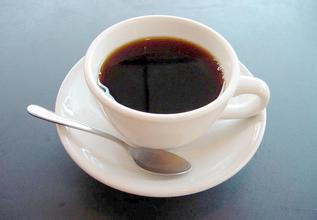What are the parts of coffee fruit structure map-fancy coffee product map
What are the parts of coffee fruit structure diagram-Fancy coffee product diagram
Coffee fruit is wrapped in a hard outer skin (cut skin), the inner layer is the gelatinous pulp (pulp), and then the inner layer is the endocarp (parchament), and then tightly wrapped in the seed skin called silver skin (silver skin), the innermost wrapped green seeds, namely coffee beans.
Seeds are usually present in pairs of two, each hemispherical, flat, and combined into an ellipsoid, which is called a flat bean, and about 5 -10% of the seeds are single ellipsoids, which are called pea berries. Due to the scarcity of round beans, they are often made into brand-name products with higher prices. There is also a concave groove in the middle of the seed, called the center cut, which is also covered with silver skin.
Honey treatment: Honey treatment method, called HoneyProcess or MielProcess, honey treatment is to peel off the flesh, the fruit with the endocarp drying method Coffee roasting is a knowledge, the age, density, hardness and moisture content of raw beans will affect the quality of roasted coffee; Even the relative humidity and temperature on the day of roasting cannot be ignored. Roasting is to directly heat the roasted matter without using oil, water, salt or sugar. Wet processing (washing): also known as washing method processing, the coffee fruit is screened by soaking, and then the fruit after screening is fermented, squeezed and other methods to remove the peel, pulp and silver skin. The processed coffee beans will retain the silver skin on the surface for storage. The coffee beans in this state are called "Parchment Coffee"(Parchment Coffee), and the dried silver skin will be removed by peeling machine until they are exported. The biggest advantage of wet processing is that the appearance of coffee beans is excellent, and the original taste is maintained well: the disadvantage is that the processing cost is higher and a lot of water is required. Generally used for the processing of high-quality coffee beans from coffee fruit to coffee beans processing methods can be roughly classified as dry processing and wet processing, there are dense processing.
Dry processing (sun exposure): coffee fruit is the use of sunlight and ventilation and other natural conditions to dry dehydration, and then put the dried coffee fruit into the shell to pulp, peel and silver skin. This method is the most economical and traditional processing method, and the coffee beans treated in this method can maintain the aroma for a long time, but at the same time will have a certain environmental smell. At present, many parts of Africa and Asian countries use this method, but with the advancement of science and technology, many places have begun to use dryers to dry coffee fruits.

Important Notice :
前街咖啡 FrontStreet Coffee has moved to new addredd:
FrontStreet Coffee Address: 315,Donghua East Road,GuangZhou
Tel:020 38364473
- Prev

How much is the appropriate thickness of the bean grinder-Italian coffee grinder
Espresso grinder thickness time does not change the award-winning philosophy oriented to the reliability and accuracy of its equipment, leading to today's Mazzer manufacturers' industry standards throughout the production process, and with advanced technology and meticulous quality control in about factory production. 7000 square meters. At Gardigiano in Pierre (Venice). Mazzer electric appliance
- Next

How to adjust the scale of the bean grinder-how to adjust the scale of the Italian bean grinder
How to adjust the scale of the grinder-how to adjust the scale of the Italian grinder when adjusting the electronic bean grinder, we should first grasp the relationship between the amount of powder and the degree of grinding. Thinking that these two variables change with one variable, we need to constantly adjust the test to achieve the best results. The hardest part of adjusting the electronic bean grinder is that when you are adjusting
Related
- What brand of black coffee is the most authentic and delicious? what are the characteristics of the flavor of the authentic Rose Summer Black Coffee?
- Introduction to the principle and characteristics of the correct use of mocha pot A detailed course of mocha pot brewing coffee is described in five steps.
- Which is better, decaf or regular coffee? how is decaf made?
- How much is a bag of four cat coffee?
- How about four Cat Coffee or Nestle Coffee? why is it a cheap scam?
- Which is better, Yunnan four Cats Coffee or Nestle Coffee? How about cat coffee? is it a fake scam? why is it so cheap?
- How about Cat Coffee? what grade is a hoax? which instant coffee tastes better, four Cat Coffee, Nestle Coffee or G7 coffee?
- Process flow chart of coffee making-Starbucks coffee making process what coffee tastes good at Starbucks
- The top ten best coffee beans in the world Rose summer coffee or Tanzanian coffee tastes good
- Yunnan four cat coffee is good to drink?_four cat coffee is a big brand? four cat blue mountain coffee is fake?

